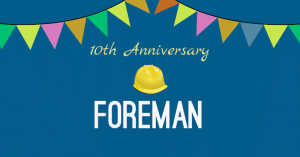Willkommen beim NETWAYS GitHub Update, unser monatlicher Überblick über unsere neuesten Releases.
Unsere GitHub Projekte vom Mai 2023 umfassen unter anderem ein Update für Icinga-Powershell, den Icinga Installer und zwei aktualisierte Trainingsunterlagen!
Für weitere und schnellere Informationen kannst du uns auch auf GitHub folgen: https://github.com/NETWAYS/
icinga-powershell-connector Release v0.3.0
Changelog
- Hinzugefügt: Bessere Fehlermeldung für Timeouts
- Hinzugefügt: Timeout ist jetzt konfigurierbar
- Performance Optimierungen des Parsers
- Diverse Optimierungen im Buildprozess
- Abhängigkeiten aktualisiert
https://github.com/NETWAYS/icinga-powershell-connector/releases/tag/v0.3.0
check-disk-btrfs Release v3.1.0
Changelog
- Viele neue Tests für zukünftige Wartbarkeit
- Hinzugefügt: Neue Optionen für Sub-Checks –missing und –error
- Hinzugefügt: –no-sudo und –no-unallocated Optionen zum Deaktivieren der Funktionen
https://github.com/NETWAYS/check_disk_btrfs/releases/tag/v3.1.0
check-hp-ilo Release v0.1.0
Changelog
- Großer Refactor für zukünftige Wartbarkeit
- Hinzugefügt: –exclude Option kann nun mehrfach genutzt werden
- Hinzugefügt: Nicht installierte Komponenten werden ignoriert.
- Hinzugefügt: Gerätname in der Status Ausgabe
- Bugfix: Sub-Checks zeigen jetzt nicht mehr die ILO Ausgabe als Status sondern Icinga-konforme Status
- Perfdata Ausgabe optimiert
https://github.com/NETWAYS/check_hp_ilo/releases/tag/v0.1.0
icinga-installer Release v1.2.4
Changelog
- Bugfix: Parameter in Server Manifest angepasst
- Diverse Anpassungen in der Dokumentation
https://github.com/NETWAYS/icinga-installer/releases/tag/v1.2.4
Training Foreman Release v1.7
Changelog
- Update auf Foreman 3.5 und Katello 4.7
- Refactor: Katello als Basis
- Update von Plugins, Screenshots und Grafiken
https://github.com/NETWAYS/foreman-training/releases/tag/v1.7
Training GitLab Release v4.0.0
Changelog
- Leichterer Einstieg in Git
- Refactor: mehr GitLab Themen und einige Git Themen entfernt
- Formulierung auf vielen Folien optimiert
https://github.com/NETWAYS/gitlab-training/releases/tag/v4.0.0

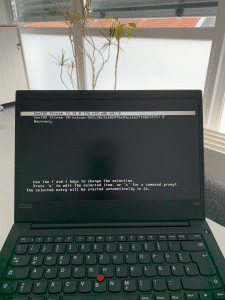
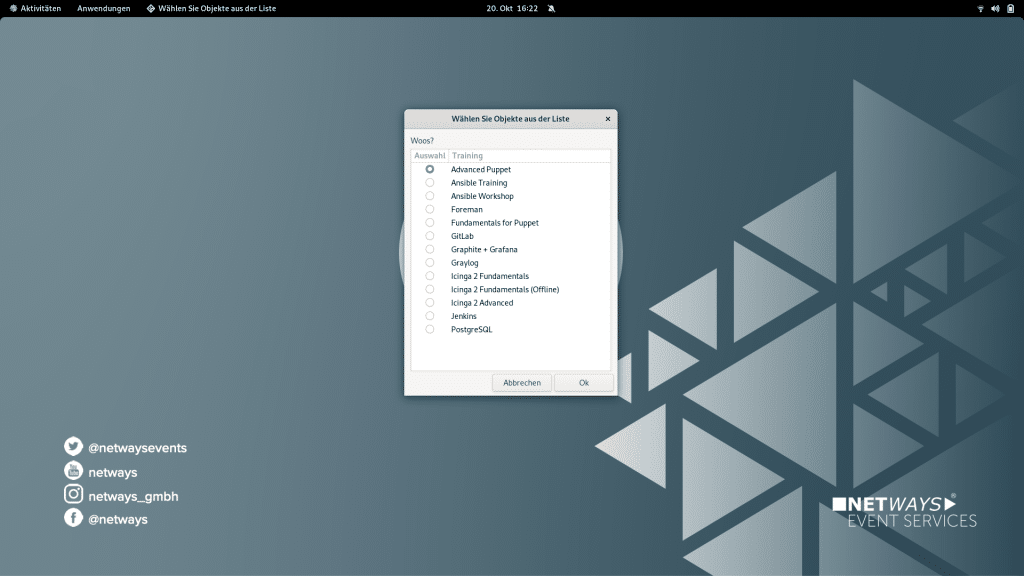
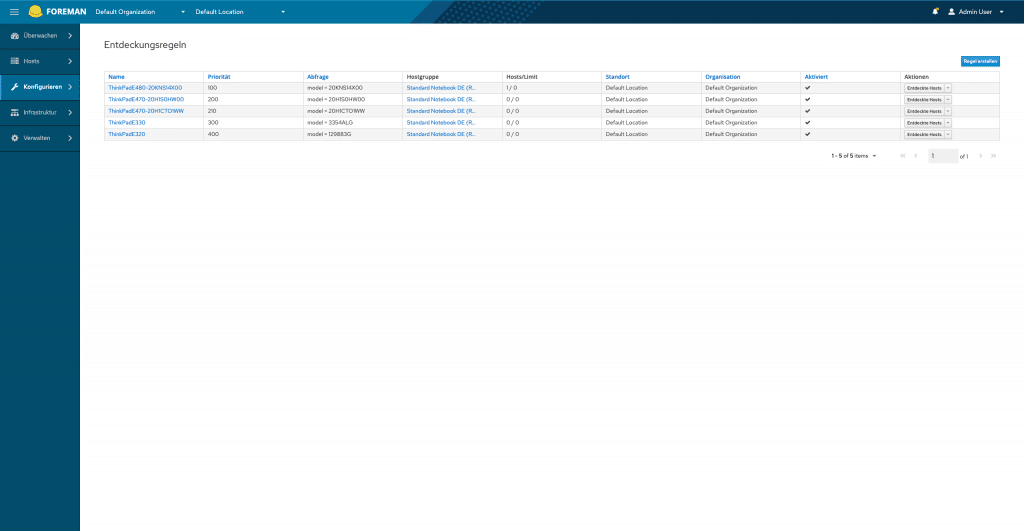


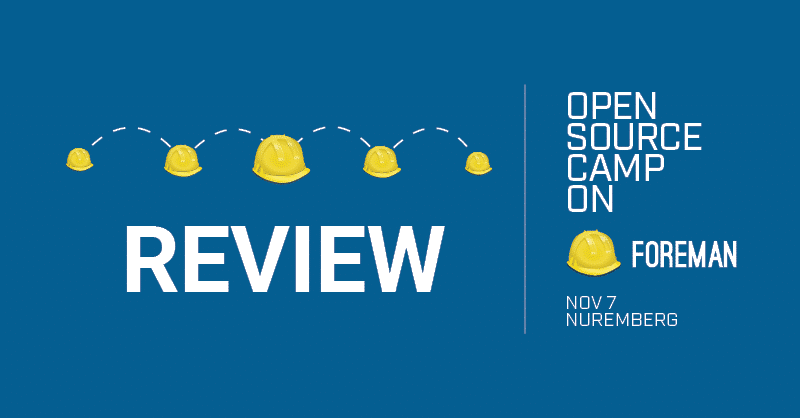
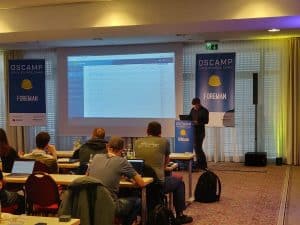 fferent and both have their advantages and disadvantages. By going through some basic steps, like role assignment, host creation and so on, he showed how one can do all that, but with Ansible. You can easily dynamically allocate roles and installations through Ansible to your Foreman hosts, but to make it even more specific one can set custom variables within the Ansible plugin for it to use, like foreman_repository_version. You could invoke a Job, like an Ansible Playbook, which will overwrite the variables previously set or make your installation more customizable from the get go. Install from git, run a playbook through ssh and more was covered during his talk. The plugin would not be a good alternative or viable if it did not hold up against the standards that puppet sets as a competitor. While Ansible doesn’t offer an inherit solution for reoccurring runs like every hour, the plugin does.
fferent and both have their advantages and disadvantages. By going through some basic steps, like role assignment, host creation and so on, he showed how one can do all that, but with Ansible. You can easily dynamically allocate roles and installations through Ansible to your Foreman hosts, but to make it even more specific one can set custom variables within the Ansible plugin for it to use, like foreman_repository_version. You could invoke a Job, like an Ansible Playbook, which will overwrite the variables previously set or make your installation more customizable from the get go. Install from git, run a playbook through ssh and more was covered during his talk. The plugin would not be a good alternative or viable if it did not hold up against the standards that puppet sets as a competitor. While Ansible doesn’t offer an inherit solution for reoccurring runs like every hour, the plugin does.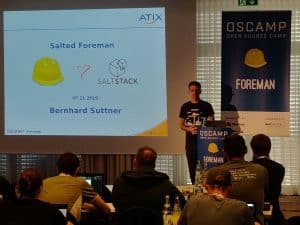 salt and Foreman environment means running a environment of managed hosts, which are salt minions and a foreman_smart_proxy, which will also be the salt master. He showed us what
salt and Foreman environment means running a environment of managed hosts, which are salt minions and a foreman_smart_proxy, which will also be the salt master. He showed us what 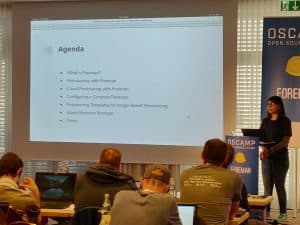 extend of Foremans capabilities in terms of provisioning. This was especially important because Foremans capabilities differ from its usual when it comes to cloud provisioning. After a quick trip through the configuration of compute resources and imaged-based provisioning templates we went onward to the
extend of Foremans capabilities in terms of provisioning. This was especially important because Foremans capabilities differ from its usual when it comes to cloud provisioning. After a quick trip through the configuration of compute resources and imaged-based provisioning templates we went onward to the 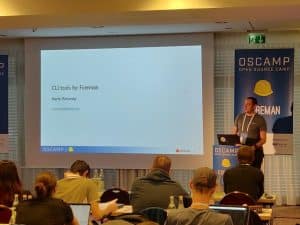 was his next tool, which is using
was his next tool, which is using 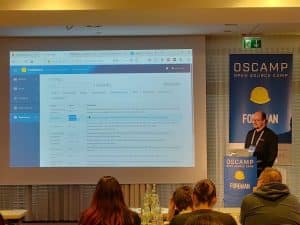 explained was plain and simple, because you where able to see it as he did it. At the very top of his agenda was Job Invocation/Remote Execution. Not that exciting you think? Well, more interesting is the best practice advice he threw in on the way, like there is no issue of the configured user because his password is not saved as plain text in the database. Then the development part was up. He showed a couple of jobs that he wrote himself. Easiest, which served as an example is a simple ping check. He pointed out important thoughts to keep in mind, while writing jobs, like default values. Before his talk came to a close he talked a bit about the Web Console which has been introduced and is yet not well known. The web console is pretty much a integration of Cockpit. A well experienced user in the Linux world won’t be that excited about this, but a less experienced user will love this.
explained was plain and simple, because you where able to see it as he did it. At the very top of his agenda was Job Invocation/Remote Execution. Not that exciting you think? Well, more interesting is the best practice advice he threw in on the way, like there is no issue of the configured user because his password is not saved as plain text in the database. Then the development part was up. He showed a couple of jobs that he wrote himself. Easiest, which served as an example is a simple ping check. He pointed out important thoughts to keep in mind, while writing jobs, like default values. Before his talk came to a close he talked a bit about the Web Console which has been introduced and is yet not well known. The web console is pretty much a integration of Cockpit. A well experienced user in the Linux world won’t be that excited about this, but a less experienced user will love this.

